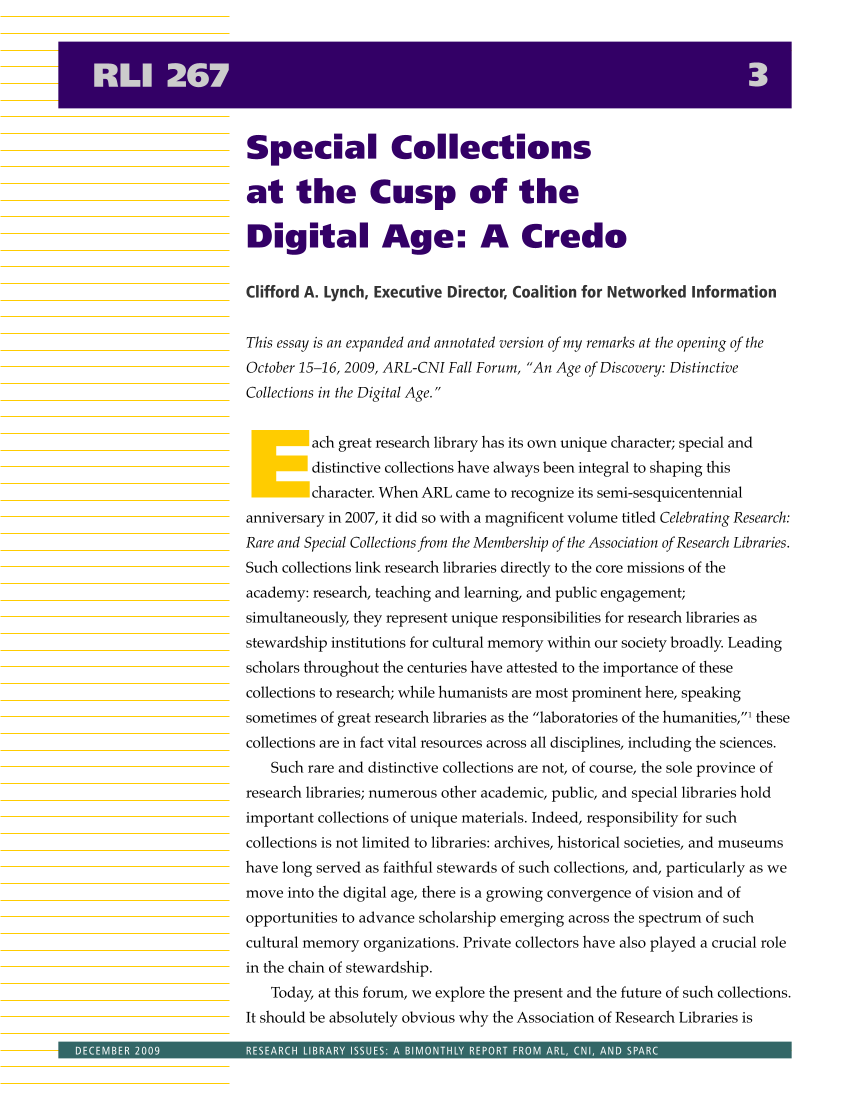Special Collections at the Cusp of the Digital Age: A Credo Clifford A. Lynch, Executive Director, Coalition for Networked Information This essay is an expanded and annotated version of my remarks at the opening of the October 15–16, 2009, ARL-CNI Fall Forum, “An Age of Discovery: Distinctive Collections in the Digital Age.” E ach great research library has its own unique character special and distinctive collections have always been integral to shaping this character. When ARL came to recognize its semi-sesquicentennial anniversary in 2007, it did so with a magnificent volume titled Celebrating Research: Rare and Special Collections from the Membership of the Association of Research Libraries. Such collections link research libraries directly to the core missions of the academy: research, teaching and learning, and public engagement simultaneously, they represent unique responsibilities for research libraries as stewardship institutions for cultural memory within our society broadly. Leading scholars throughout the centuries have attested to the importance of these collections to research while humanists are most prominent here, speaking sometimes of great research libraries as the “laboratories of the humanities,”1 these collections are in fact vital resources across all disciplines, including the sciences. Such rare and distinctive collections are not, of course, the sole province of research libraries numerous other academic, public, and special libraries hold important collections of unique materials. Indeed, responsibility for such collections is not limited to libraries: archives, historical societies, and museums have long served as faithful stewards of such collections, and, particularly as we move into the digital age, there is a growing convergence of vision and of opportunities to advance scholarship emerging across the spectrum of such cultural memory organizations. Private collectors have also played a crucial role in the chain of stewardship. Today, at this forum, we explore the present and the future of such collections. It should be absolutely obvious why the Association of Research Libraries is RLI 267 3 DECEMBER 2009 RESEARCH LIBRARY ISSUES: A BIMONTHLY REPORT FROM ARL, CNI, AND SPARC












































